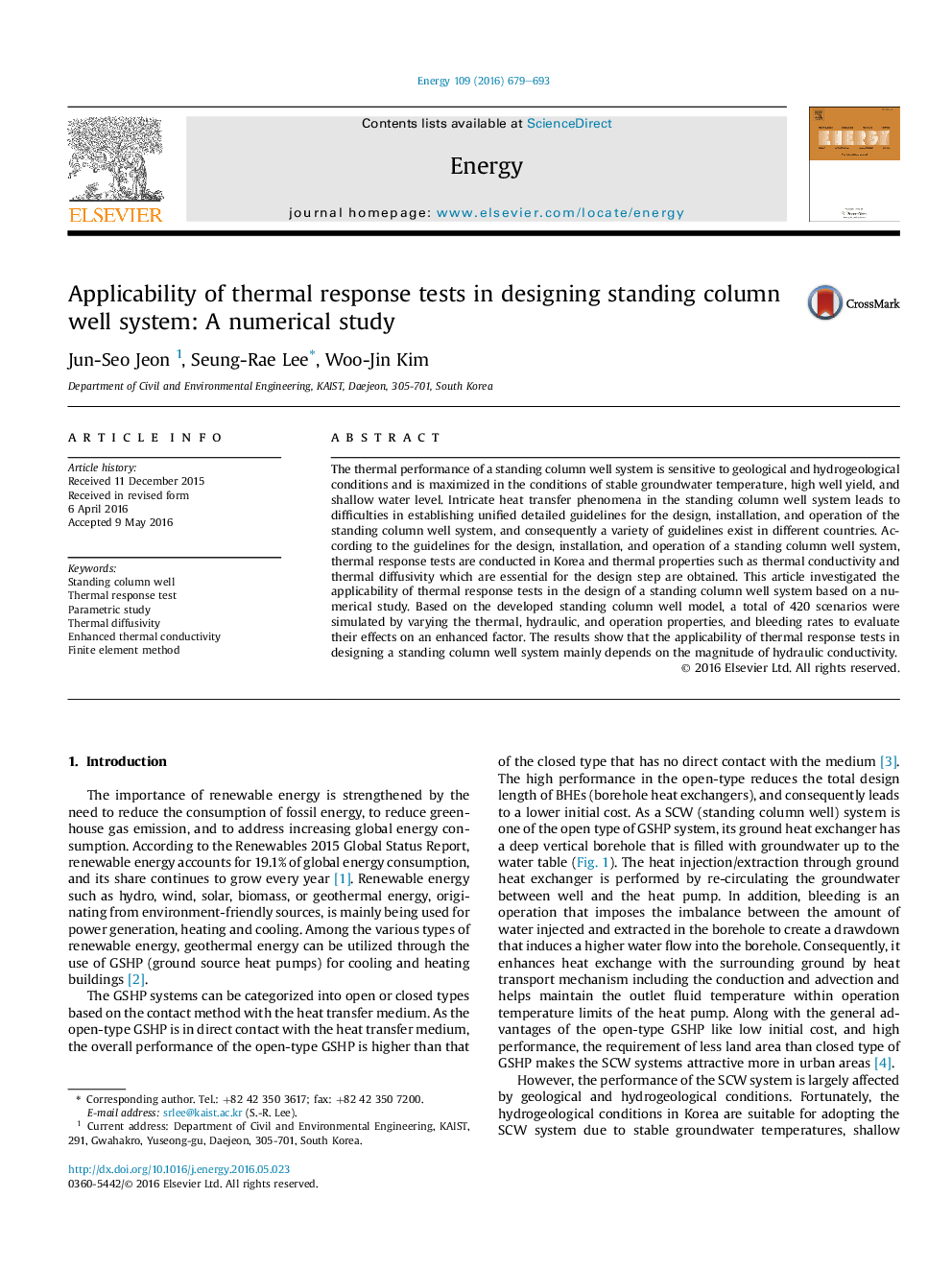| Article ID | Journal | Published Year | Pages | File Type |
|---|---|---|---|---|
| 8073583 | Energy | 2016 | 15 Pages |
Abstract
The thermal performance of a standing column well system is sensitive to geological and hydrogeological conditions and is maximized in the conditions of stable groundwater temperature, high well yield, and shallow water level. Intricate heat transfer phenomena in the standing column well system leads to difficulties in establishing unified detailed guidelines for the design, installation, and operation of the standing column well system, and consequently a variety of guidelines exist in different countries. According to the guidelines for the design, installation, and operation of a standing column well system, thermal response tests are conducted in Korea and thermal properties such as thermal conductivity and thermal diffusivity which are essential for the design step are obtained. This article investigated the applicability of thermal response tests in the design of a standing column well system based on a numerical study. Based on the developed standing column well model, a total of 420 scenarios were simulated by varying the thermal, hydraulic, and operation properties, and bleeding rates to evaluate their effects on an enhanced factor. The results show that the applicability of thermal response tests in designing a standing column well system mainly depends on the magnitude of hydraulic conductivity.
Keywords
Related Topics
Physical Sciences and Engineering
Energy
Energy (General)
Authors
Jun-Seo Jeon, Seung-Rae Lee, Woo-Jin Kim,
